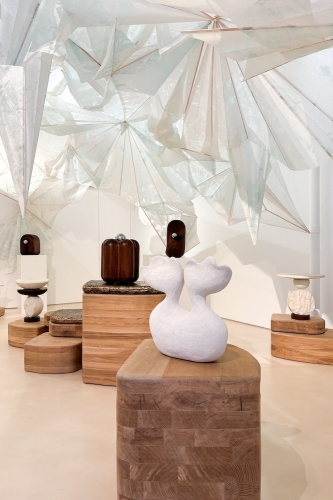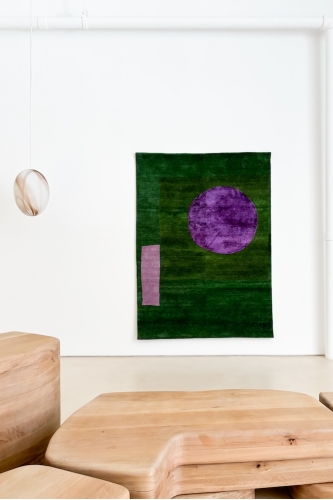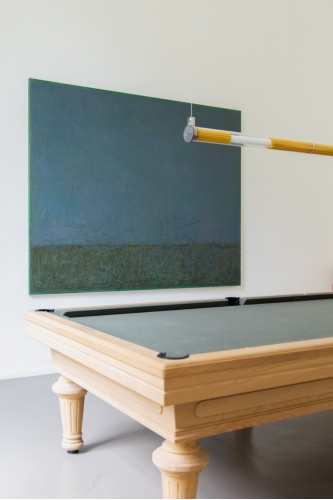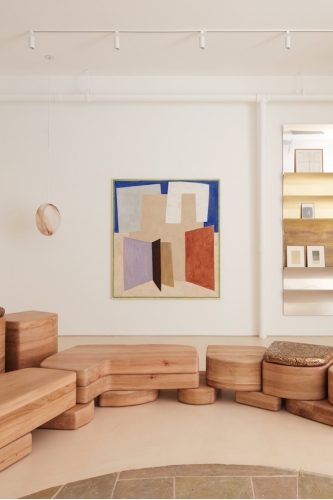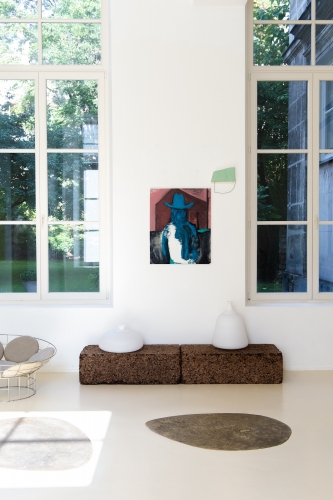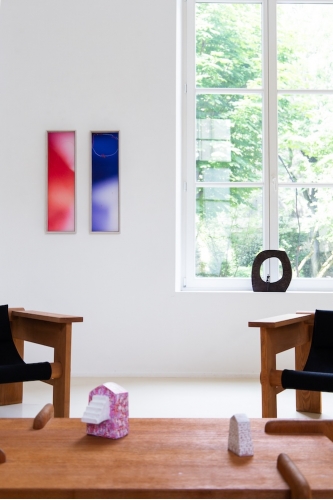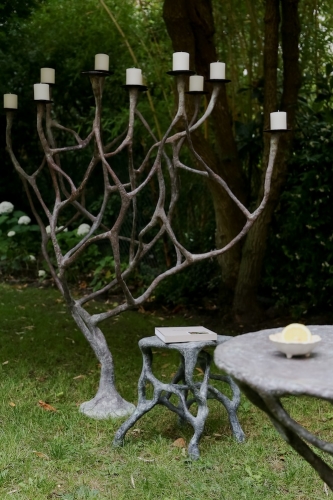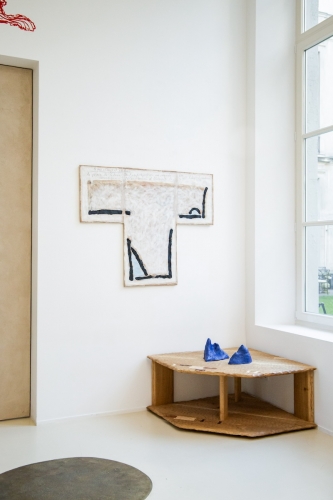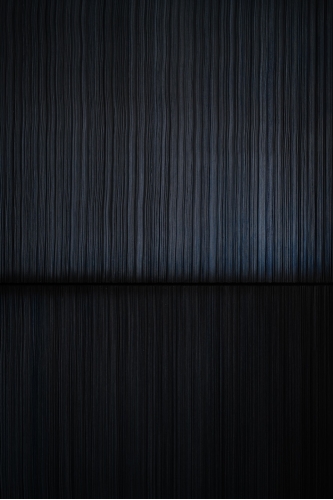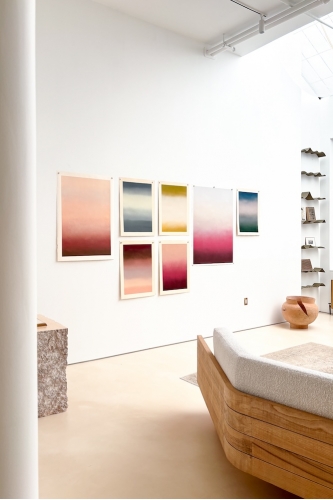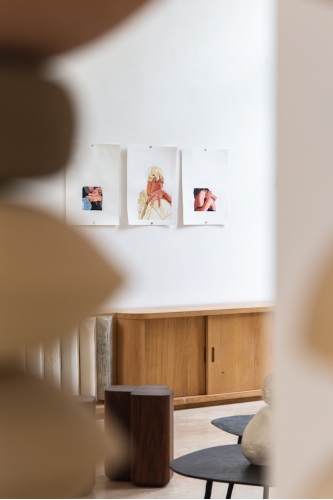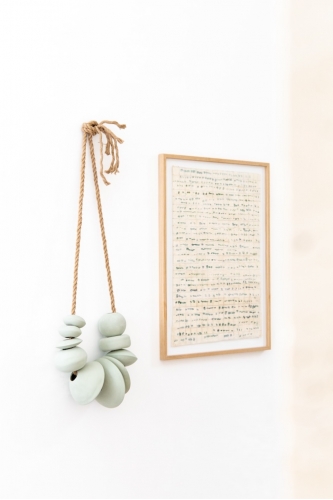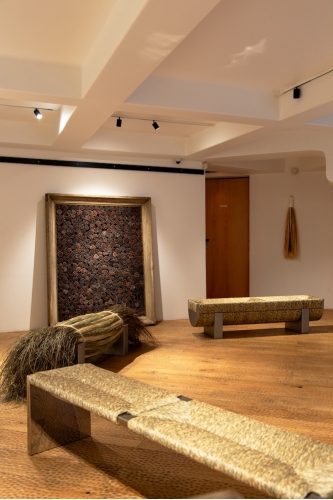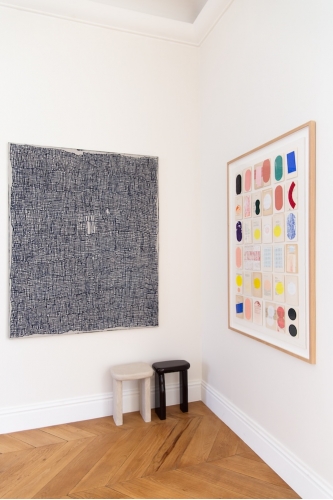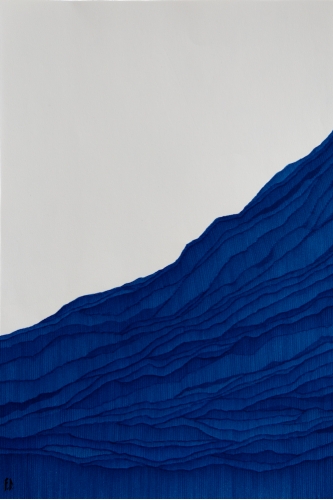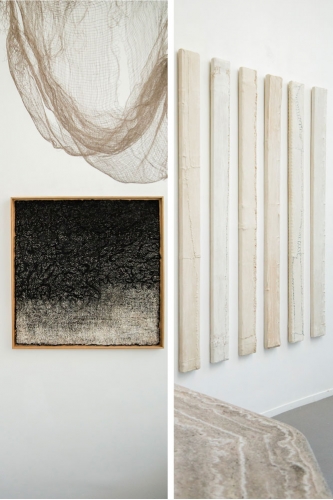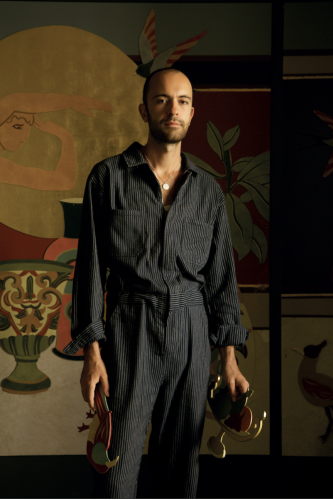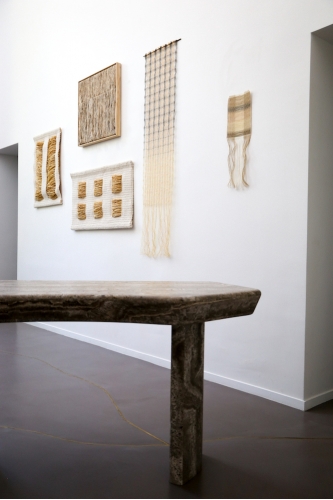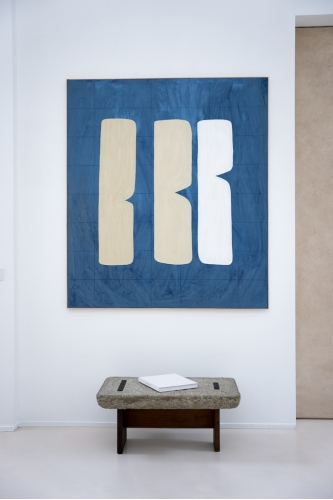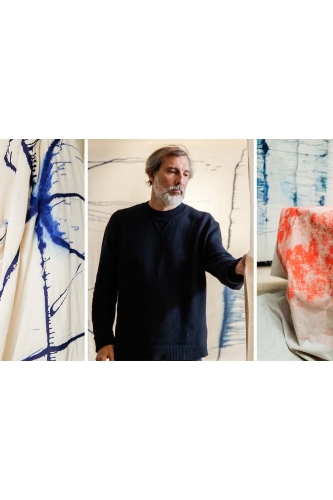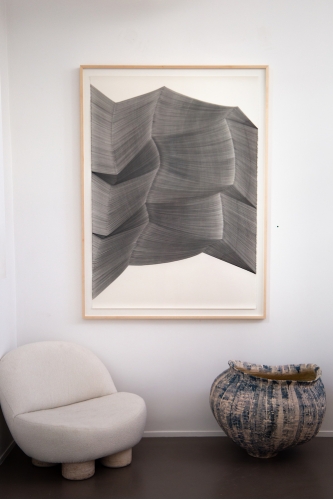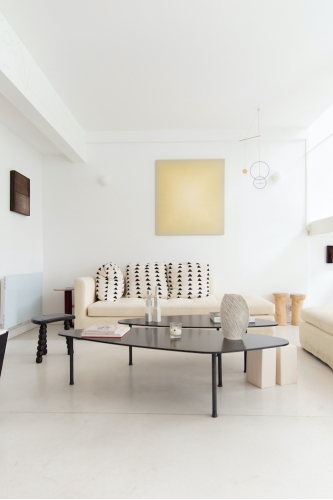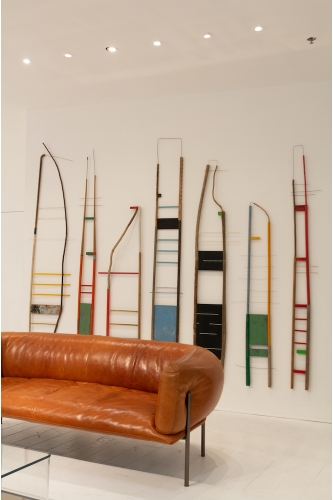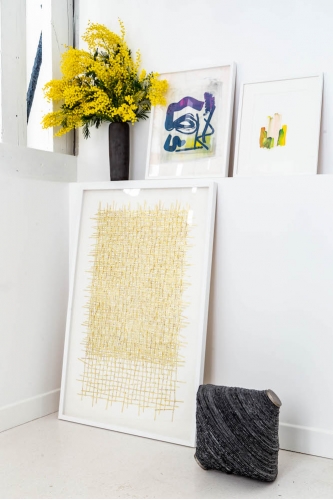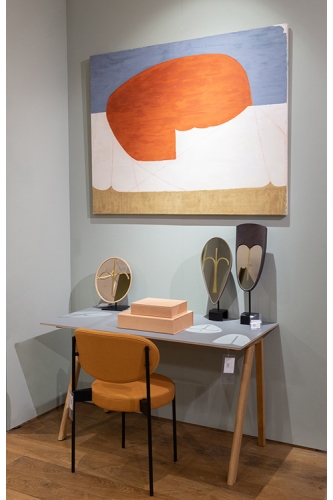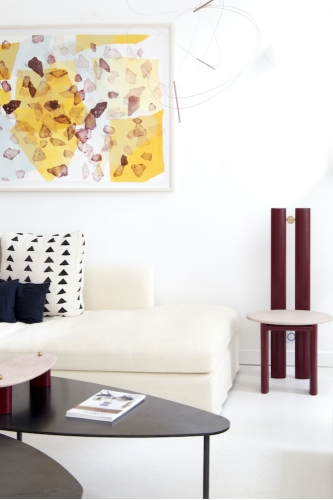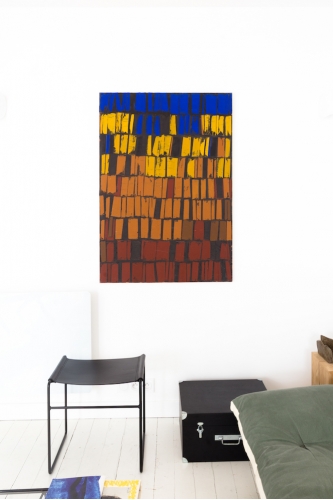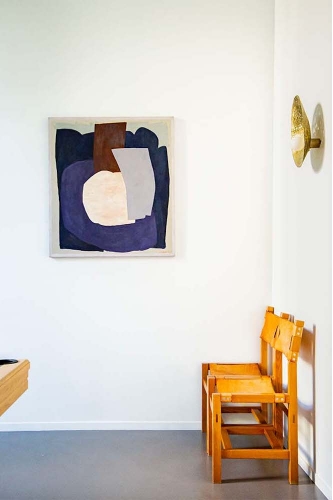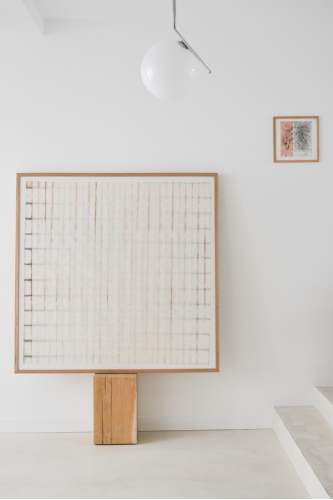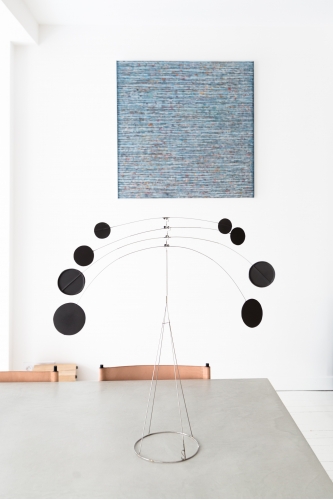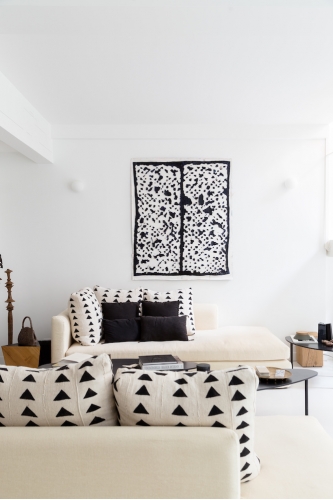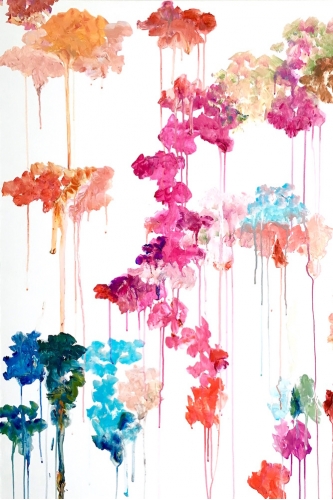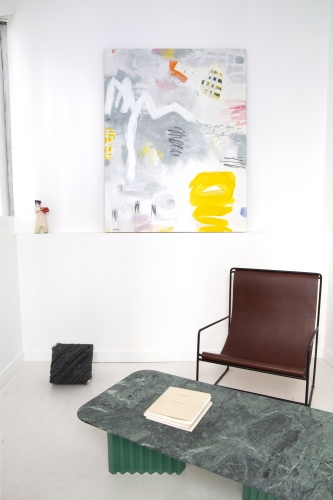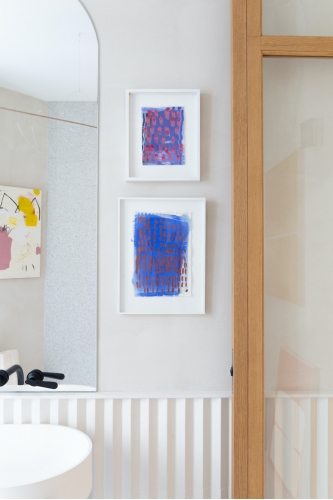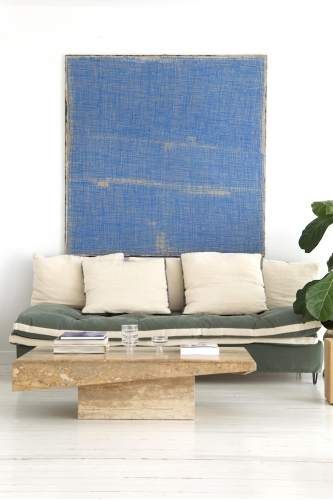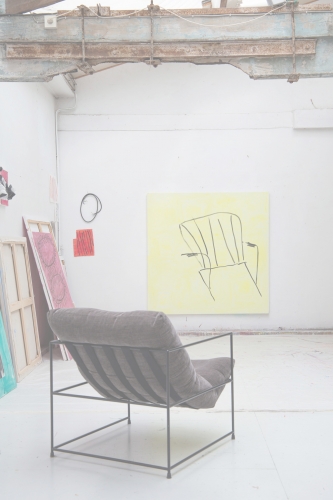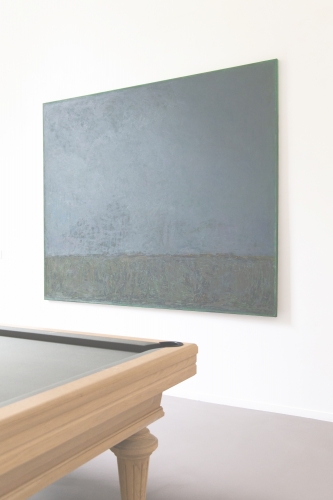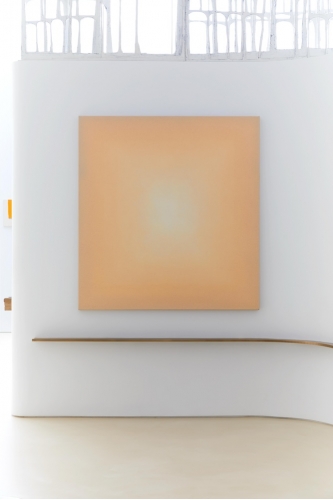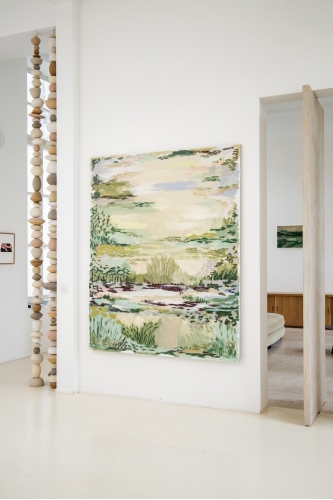exhibitions
see more
PAST EXHIBITIONS

Aux contours effacés
Delphine de Luppé & Tanguy Tolila
From November 8 to 23, 2023
Delphine de Luppé
On old papers covered with words and images from the past, Delphine de Luppé draws new signs, using pencil, acrylic, or oil stick. As if endlessly rereading history. Books, treatises, postcards, travel guides, heliogravures... The sources vary. Almost all of them exalt the structures of past centuries, those ruins and monuments that inspire respect. This penchant for borrowing, for working from models, perhaps inherited from the sketchbooks she used to fill with copies from the Louvre, allows her to approach what precedes us and will undoubtedly outlive us. Among the handful of motifs in her repertoire, the arch reigns supreme. Both hollow and peak, it supports and connects, bridging the world of yesterday and her vision of things. Because here, to take up again means to continue, and even when the original background is submerged under a network of lines resembling graffiti, it does not disappear. Elsewhere, the game turns into trompe-l'oeil, or even exquisite corpse: trained in ephemeral architecture, Delphine de Luppé plays with perspective, decorative elements, grafting a chandelier, a capital, a pair of curtains here and there, building plans, carefully staging her scenes. By constantly going back in time, the archive becomes current. The finished impression returns to the sketch stage, and vice versa: with naive strokes, the richness of pastel writes the next events.
Virginie Huet
Tanguy Tolila
Tracing paper, military maps, sheet music, book covers, sewing patterns, shipwreck wood... Of all materials, Tanguy Tolila prefers those marked by their previous life. Sometimes a century old, their mature skin forms folds and wrinkles that the artist cherishes. Because they serve as a framework, a guide. Each layer of glaze plays the game, revealing the signs of age in full transparency. After the glaze comes the line, a true signature. More or less thick, straight or curved, it stretches or breaks, crosses another, takes a turn, a pause, leaving the heart at peace. Tanguy Tolila values this inner silence, sensitive to Mies Van der Rohe's Bauhaus style, an enemy of excess. Graphic, almost geometric, the whole is "pure and hard," a kind of architecture built around elementary forms, never "soft" and always "in tension," with muted tones that "grate." Occasionally, touches of yellow, orange, green, or purple brighten the gray of his grids, like confetti scattered on a sidewalk or marble fragments. This is perhaps the only whimsy in his understated art, full of delicacy towards second-hand objects, the cherished supports of his paintings. Such as those worn basketballs, cracked fossils, or stains reminiscent of Claude Viallat's ectoplasms. These "planets," along with his "scales," are among the only known motifs in his simple system, where nothing else floats except rocks on the horizon.
Virginie Huet




